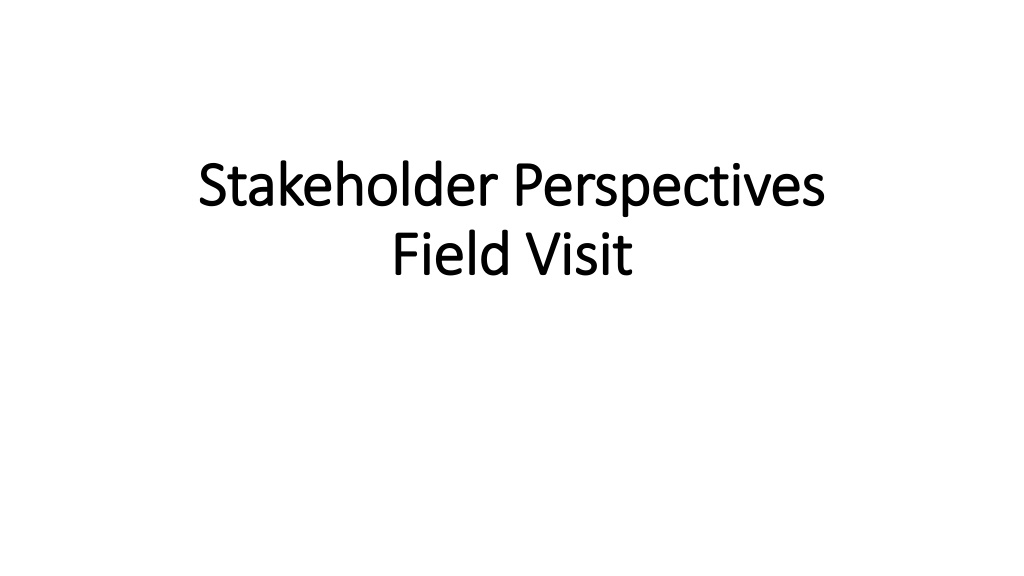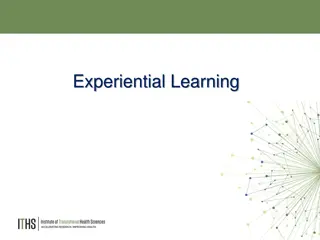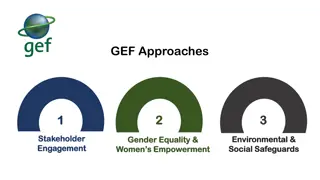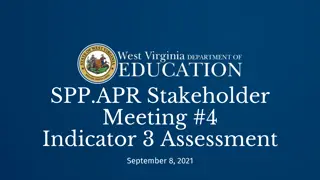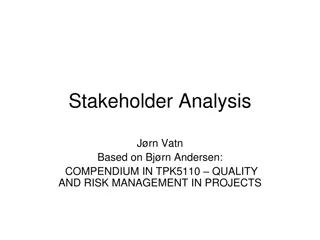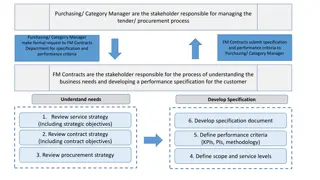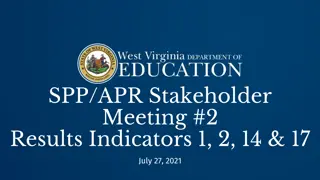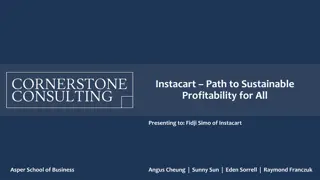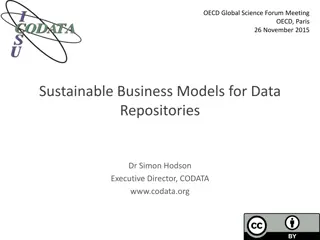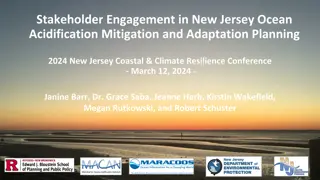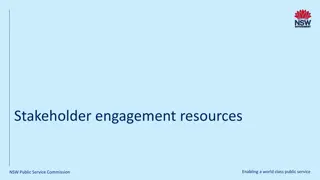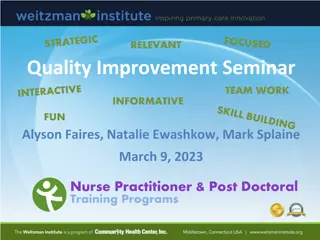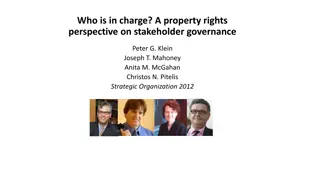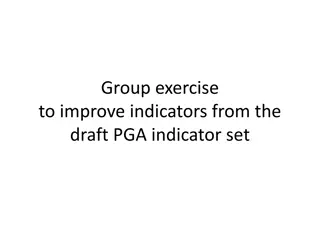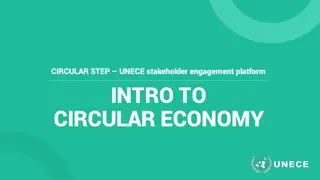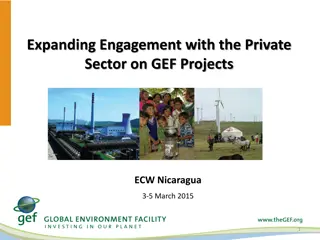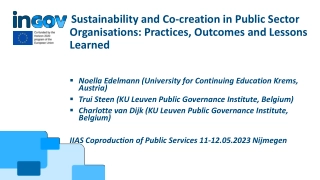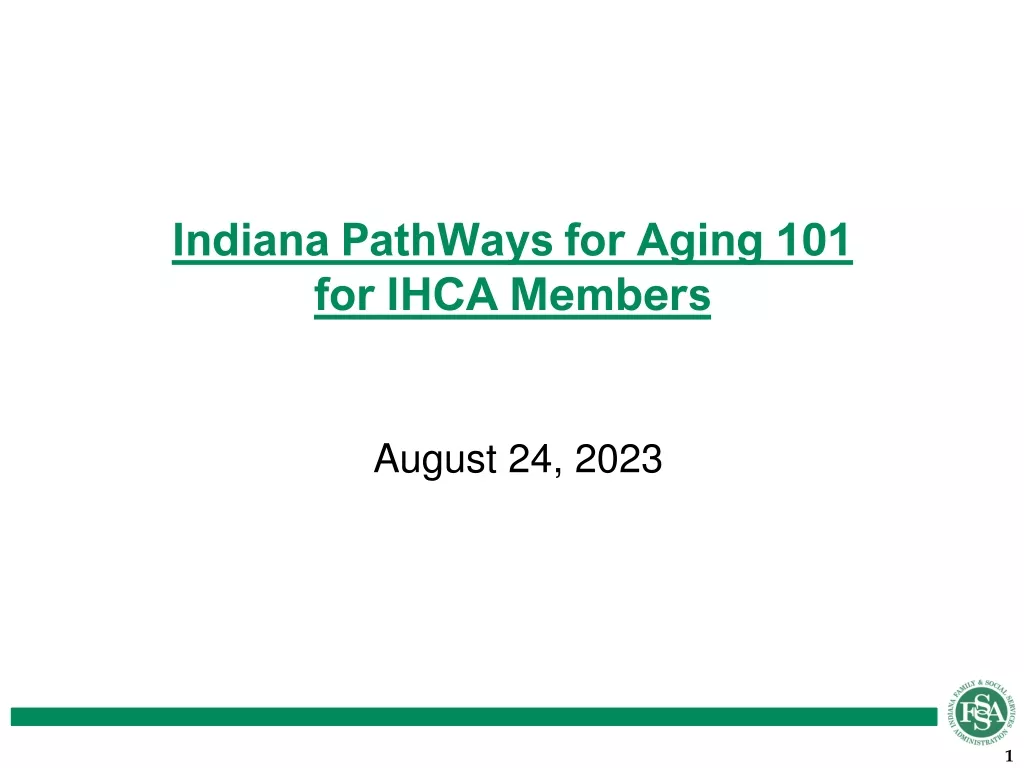Enhancing Sustainable Landscape Management Through Stakeholder Engagement
Stakeholder perspectives play a crucial role in landscape management, focusing on participation, inclusiveness, resource efficiency, and linkage to inclusive green growth. Key points include engaging community actors, utilizing resources effectively, linking landscape management to sustainable growth, and ensuring the sustainability of landscape management processes. Challenges like limited resources, perceived risks, and inefficiencies need to be addressed for successful implementation. Emphasizing collaboration, equal opportunities for all, and long-term benefits for communities can lead to a more sustainable landscape management approach.
- Stakeholder engagement
- Sustainable landscape management
- Community participation
- Green growth
- Resource efficiency
Download Presentation

Please find below an Image/Link to download the presentation.
The content on the website is provided AS IS for your information and personal use only. It may not be sold, licensed, or shared on other websites without obtaining consent from the author. Download presentation by click this link. If you encounter any issues during the download, it is possible that the publisher has removed the file from their server.
E N D
Presentation Transcript
Stakeholder Perspectives Stakeholder Perspectives Field Visit Field Visit
Key Points Key Points 1. Participation and Inclusion of actors in the landscape 2. Efficient use of resources at the community level 3. Linkage of LUP/ Landscape management to Inclusive Green Growth 4. Sustainability of the Landscape management/ LUPs
Participation and Inclusiveness Participation and Inclusiveness Opportunities for the community to engage and be part of the process Resources to undertake the process - limited The case for LUPs what is the case and what is the expectation of the community? Perceived risks of the process affecting participation Process restricted to the village and not the landscape ( not mentioned)
Resource Resourceefficiency and LUPs efficiency and LUPs Key Points Missing link to sustainability of natural resources Linking LUPs to long term benefits for communities Mkonge (Land Use Change?) Access to technical capacity to determine efficiency issues in LUP Efficiency change in the LUP process
Linkage of LUP/ Landscape management to Linkage of LUP/ Landscape management to Inclusive Green Growth Inclusive Green Growth Key Points What is the bigger picture for LUPs and landscape management? Are communities seeing the process as constraining their economic activities? Equal opportunities and capacities for both men and women? Benefits sharing? Upper vs. lower communities. Resource allocation how are different economic actors considered in the process?
Sustainability of the Landscape management/ LUPs Sustainability of the Landscape management/ LUPs Key Points Programme an project approach to landscape management Internal capacity & resource generation for LUP process (localization of the process?) Broader opportunities with the wider landscape Potential opportunities for commercial actors to collaborate with communities to sustain the process?
LUD Tanzania 2016 Prioritized Actions LUD Tanzania 2016 Prioritized Actions Developing a Common Understanding of Inclusive Green Growth (IGG) and Improving Involvement of all Actors in Landscape Related Processes (Participation and Inclusiveness) Identifying and mapping of the stakeholders initiatives in order to define further opportunities to understand IGG within the cluster. Linking of different stakeholder initiatives. The GRG was considered as a potential platform to steer the process of linking initiatives existing in the landscape. Organizing workshops/forums/conferences and continued dialogue for the stakeholders on IGG to enable them contribute to the process and also to build their capacity. Organizing field visits to the landscapes of interest; field visits provides a firsthand point of information that helps to clarify and make the actual challenges real than when it is discussed in a room without tangible evidence. Developing terms of reference and actions - clearly defined action plans and terms of engagement for various stakeholders involved in the landscape to work through IGG concepts in the respective initiatives For issues of accountability, monitoring and evaluation frameworks should be designed and enforced to help monitor inclusiveness. Some of the stakeholders to be involved in this process are the state-based institutions, Local Governments, National Land Use Task Force, NGOs/CSOs and the communities.
LUD Tanzania 2016 Prioritized Actions LUD Tanzania 2016 Prioritized Actions Need for Collaborative Platforms Identify the existing platforms and evaluate their capacity and inclusiveness in terms of what they address with a focus on the landscape. Align these platforms to avoid the risk of multiplicity. Stakeholders to be informed of the existing platforms and the need to effectively utilize resources. Develop mechanisms at the Cluster level to ensure coordination of monitoring actions and sharing knowledge of successful practices that can link this platform to the GRG and SUSTAIN Initiative. Ensure existence of feedback loops so that knowledge is shared across clusters up to corridor level and down to action on the ground; this is a key leverage point to influence practice and policy. The challenge of having so many stakeholders was considered as a threat in achieving results. While the diversity is good, the platform should be narrowed/ streamlined to ensure the process runs smoothly and efficiently. There may be need for different platforms to address the emerging issues such as urbanization of rural areas and involvement of women in business.
LUD Tanzania 2016 Prioritized Actions LUD Tanzania 2016 Prioritized Actions Efficient Use of Resources Resources in question: land/soil, water resources, wildlife, rangelands, forestry. Reinforce through the above mechanisms the need for: Improved agriculture: best farming practices, organic farming, diversification, mixed land use to integrate planted forests (agroforestry), sustainable rangeland practices such as restoration and improvement of rangeland practices Alternative technologies such as rainwater harvesting should be employed to reduce the building up pressure on the existing rivers/water sources in the landscapes. Catchment restorations through initiatives such as selective tree planting Law enforcement and providing alternative ways and demonstration especially cultivation of river banks in the wetlands Institutional capacity building (for water management) and knowledge sharing Adoption of efficient irrigation methods such as drip irrigation and promote the conservation of the water systems.
BREAKOUT GROUP QUESTIONS: Are there any gaps in the 2016 priority actions? What are the new priority actions moving forward? Who do you know of that is already working on these actions?
